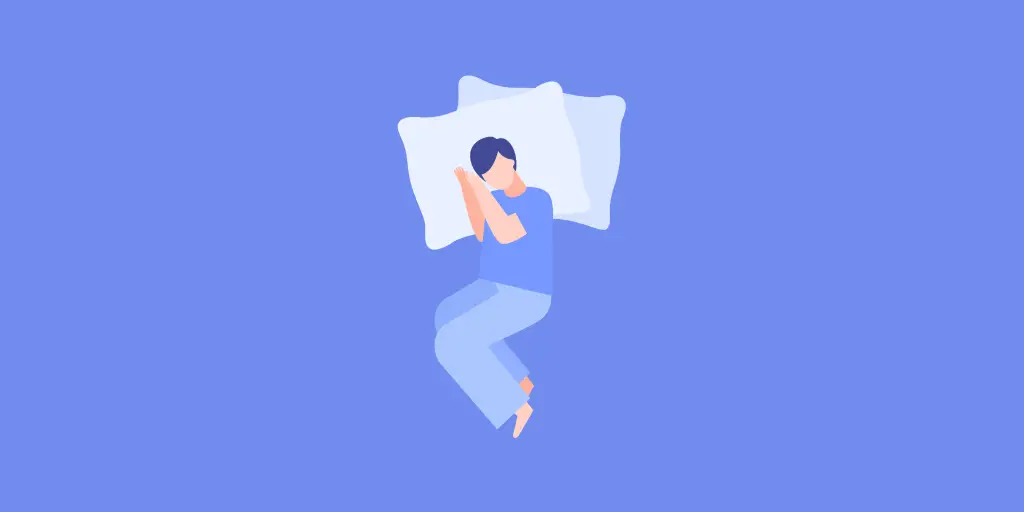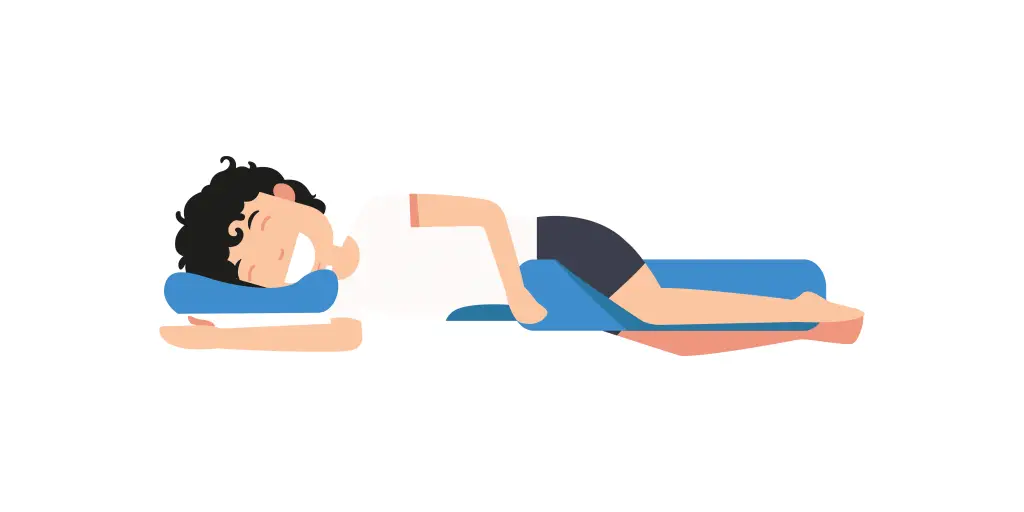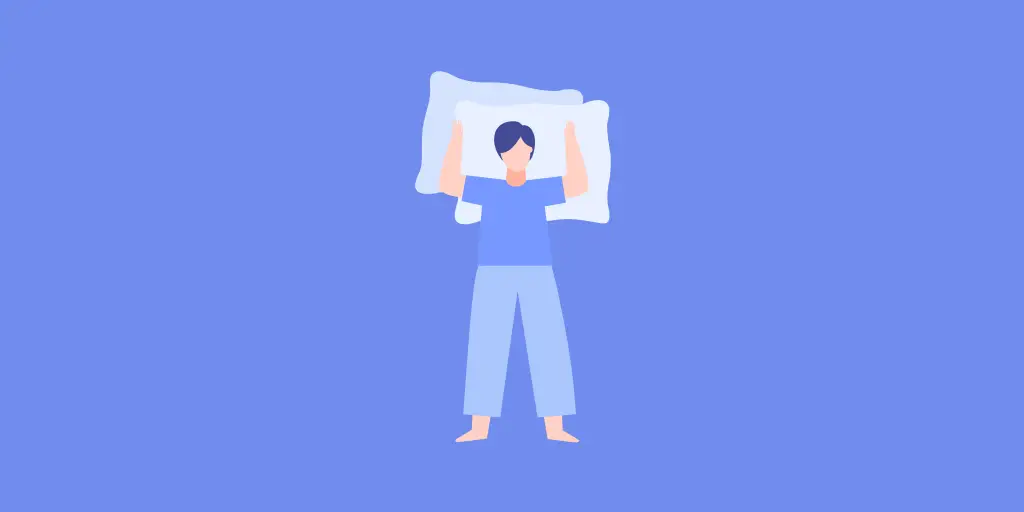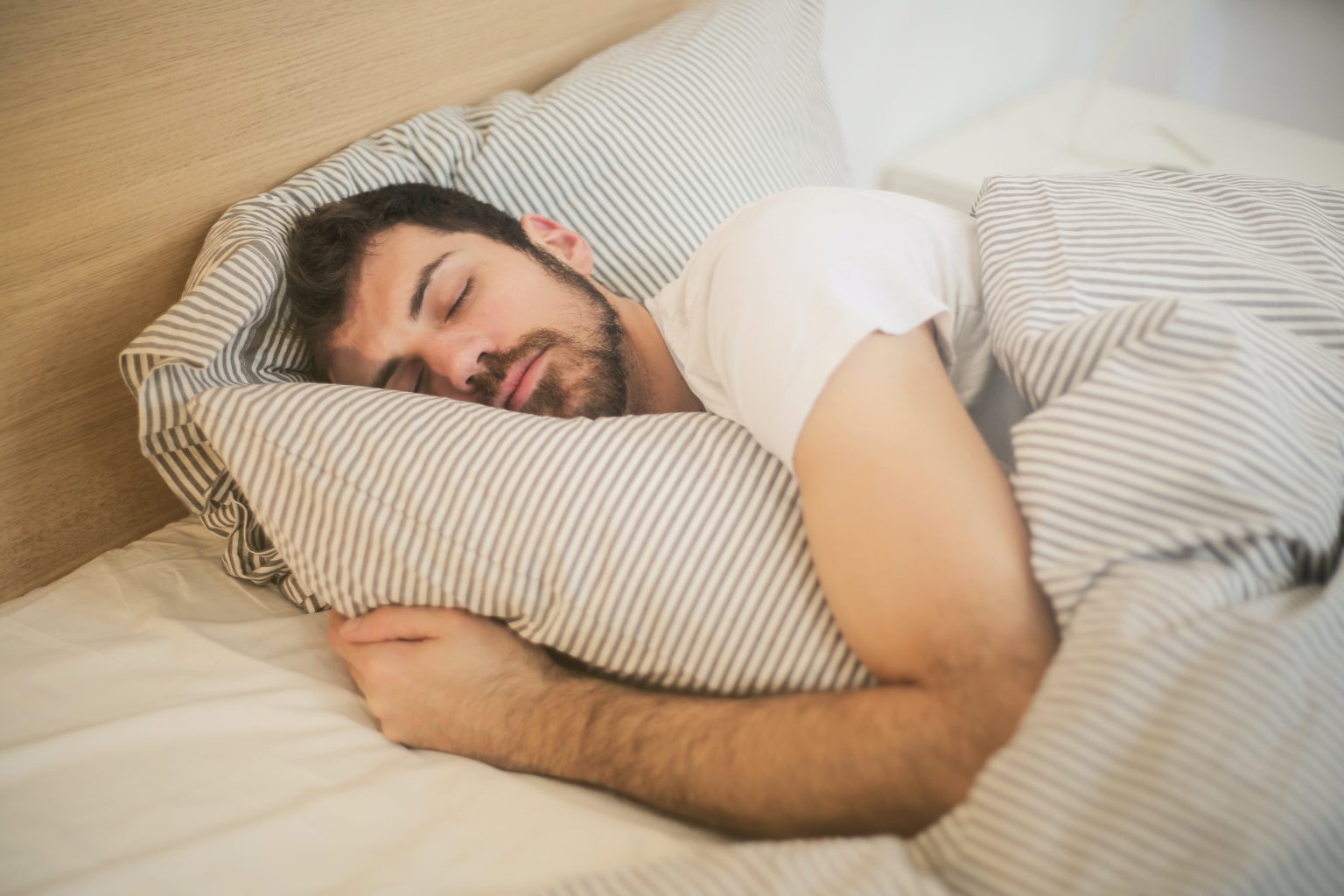Table of Contents
It’s no secret that sleep quality is linked to physical health. The position in which we sleep, called sleep position, has a big impact on how restful our sleep is.
In this guide, we’ll explore different sleep positions and how they affect our physical health. We’ll cover topics like back pain relief, snoring reduction, and more.
If you’re looking to get a better night’s sleep, you’ll want to understand the importance of finding the right sleeping position.
7 Impactful Sleep Positions
Back Sleeping

One of the most beneficial sleep positions is on your back. It helps to align your spine and reduce pressure on your neck and shoulders. It also helps to reduce acid reflux and reduce the appearance of wrinkles on your face.
Advantages:
- Spinal Alignment: Back sleeping maintains proper spinal alignment, minimizing the risk of back and neck discomfort.
- Snoring Reduction: This position is associated with decreased snoring and potential relief for mild sleep apnea symptoms.
Considerations:
- Snoring Concerns: Some individuals may experience worsened snoring when sleeping on their backs. Elevating the head using pillows can mitigate this issue.
Side Sleeping

Sleeping on your side is another popular sleeping position, especially for people who snore or have sleep apnea. Sleeping on your side can help improve your breathing and circulation, which makes it ideal for people with respiratory problems or pregnant women.
Benefits:
- Joint Comfort: Side sleeping, especially on the left, reduces spine pressure and alleviates back pain or sciatica.
- Acid Reflux Relief: It can prevent acid reflux by keeping the esophagus elevated above the stomach, decreasing acid flow.
Considerations:
- Shoulder and Hip Pressure: Side sleeping may exert pressure on shoulders and hips. Using a supportive pillow between the knees helps maintain spinal alignment.
Stomach Sleeping

Sleeping on your stomach can help with snoring, but it can also put a strain on your neck and lower back. This can cause pain and misalignment of your spine, which is not ideal for your overall health.
Advantages:
- Snoring Reduction: Stomach sleeping aids in reducing snoring and managing mild sleep apnea due to open airways.
- Sleep Apnea Management: Recommended for positional sleep apnea, reducing symptoms in specific positions.
Considerations:
- Neck and Spine Strain: Stomach sleeping may strain the neck and spine. Using a thin pillow or none at all minimizes strain.
Fetal Position

Sleeping in a fetal position can feel so cozy and safe, but it can also make it hard to breathe and cause muscle and joint stiffness, especially in the mornings.
Benefits:
- Snoring Alleviation: A curled fetal position may decrease snoring by maintaining open airways.
- Pregnancy Comfort: For pregnant individuals, this position provides comfort and improved blood circulation to the fetus.
Considerations:
- Spinal Alignment: Ensure maintaining a neutral spine position while sleeping. Using supportive pillows and alternating sides is helpful.
Pillow and Mattress Considerations

Advantages:
- Neck Support: A well-suited pillow offers vital neck support, aligning the spine correctly as per sleep position.
- Mattress Comfort: Choosing an appropriate mattress firmness caters to different sleep preferences and health needs.
Considerations:
- Individual Variations: Pillow and mattress firmness vary based on individual preferences, body weight, and health conditions.
Log Position

In the log position, the sleeper lies on their side with arms and legs extended straight. This position promotes spinal alignment and reduces pressure points, making it beneficial for individuals with back or hip pain.
Benefits:
- Promotes Spinal Alignment: Sleeping with the body in a straight line helps maintain proper alignment of the spine, reducing the risk of misalignment and discomfort.
- Reduces Pressure Points: By keeping the body elongated and evenly distributed, the log position minimizes pressure points on the hips, shoulders, and back, which can alleviate pain and discomfort.
- Enhances Blood Circulation: With the body in a straight position, blood flow is less likely to be restricted, promoting optimal circulation throughout the body.
Considerations:
- Arm and Leg Discomfort: Some individuals may experience discomfort in their arms or legs if they are extended for an extended period. Placing a pillow between the knees or under the top arm can help alleviate pressure and improve comfort.
- Neck Support: It’s important to ensure that the neck is properly supported to prevent strain or discomfort. Using a supportive pillow that keeps the head aligned with the spine can help maintain proper neck alignment.
Soldier Position

Sleeping on your back with arms at your sides is known as the soldier position. This position helps maintain spinal alignment and prevents wrinkles on the face, making it ideal for those concerned about aging.
Benefits:
- Maintains Spinal Alignment: Sleeping on the back with the arms at the sides helps keep the spine in a neutral position, promoting proper alignment and reducing the risk of back pain.
- Reduces Acid Reflux: Elevating the head slightly by sleeping on the back can help prevent acid reflux symptoms by keeping the esophagus elevated above the stomach.
Considerations:
- Back Pain: While the soldier position can promote spinal alignment, some individuals may experience back pain or discomfort if the mattress is too firm or lacks adequate support. Experimenting with different mattress types and firmness levels may help alleviate discomfort.
- Sleep Quality: Some individuals may find it difficult to fall asleep or stay asleep in the soldier position, especially if they are used to sleeping on their side or stomach. Gradually transitioning to this position by using supportive pillows and practicing relaxation techniques may help improve comfort and sleep quality over time.
Yearner Position

In the yearner position, the sleeper lies on their side with arms outstretched in front. This position can alleviate pressure on the shoulders and hips while promoting relaxation and comfort.
Benefits:
- Alleviates Shoulder and Hip Pressure: Sleeping on the side with arms outstretched can alleviate pressure on the shoulders and hips, reducing discomfort and promoting better sleep quality.
- Reduces Snoring: Side sleeping can help reduce snoring by keeping the airway open and preventing the tongue from blocking the throat, making it easier to breathe quietly and evenly.
- Promotes Circulation: By sleeping on the side, blood flow to the heart and vital organs is optimized, promoting better circulation and overall health.
Considerations:
- Neck Support: It’s important to ensure that the neck is properly supported in the yearner position to maintain spinal alignment and prevent strain or discomfort. Using a supportive pillow that keeps the head aligned with the spine can help prevent neck pain.
- Pregnancy: Pregnant individuals may find the yearner position comfortable, especially with a pillow between the knees to support the hips and lower back. However, it’s essential to avoid putting pressure on the abdomen to ensure the safety and comfort of both the mother and baby.
Conclusion
Sleep positions and physical health are complex and require a perfect blend of comfort and alignment. Tailoring sleep positions to your specific needs, preferences, and health conditions is essential for a night of restorative sleep. Whether it’s treating snoring, relieving back pain, or treating specific sleep-related issues, finding the right sleep position is a one-of-a-kind journey that has a significant impact on your overall physical health.
Also Read: 6 steps Zumba: The Fun Way to Get Fit with Dance Workouts
Quick Answers
Which sleep position is best for reducing snoring?
Side sleeping is often recommended for reducing snoring as it allows for better airflow and prevents the tongue from blocking the airway, reducing the likelihood of snoring.
Is it normal to change sleep positions throughout the night?
Yes, it’s normal to change sleep positions multiple times throughout the night. Most people shift between different positions unconsciously as they transition through various stages of sleep.
Can sleeping in the wrong position cause back pain?
Yes, sleeping in an unsupportive or improper position can lead to back pain and discomfort. It’s essential to choose a sleep position that promotes spinal alignment and provides adequate support to prevent pain and stiffness.
How can I make my stomach sleeping more comfortable?
If you prefer stomach sleeping, consider placing a thin pillow under your hips to alleviate pressure on the lower back. You can also experiment with different pillow heights to find the most comfortable position for your head and neck.
Are there any sleep positions to avoid for optimal well-being?
Stomach sleeping is generally not recommended for optimal well-being as it can strain the neck and lower back and restrict breathing. Side and back sleeping are often considered healthier alternatives.
Can sleep positions affect wrinkles and facial aging?
Yes, sleeping on your side or stomach can contribute to facial wrinkles over time due to increased pressure on the skin. Back sleeping is often recommended for maintaining a youthful appearance and preventing sleep-related wrinkles.






